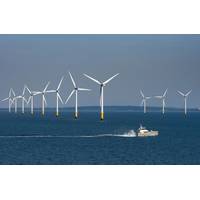Ember reports that renewables will provide 32% of the global electricity by 2024.
A report from the energy think-tank Ember on Tuesday revealed that renewable power generated a record 32% global electricity in 2017. The overall electricity demand increased 4%, driven by heatwaves, data centres, and other factors.
Euan Graham, Ember's electricity and data analyst, said that energy security concerns, which are exacerbated by the trade war caused by President Donald Trump’s tariffs on imports from the United States, could increase demand for renewable energy this year.
Tariffs sent energy and equity markets plummeting, and raised concerns about a possible global recession.
Graham said that it is too early to say whether tariffs will impact electricity demand in this year. However, renewable energy could benefit.
He said that "Countries think more about their energy and security than ever and I believe this means homegrown renewables like solar and wind become more and more appealing."
Ember's Global Electricity Review revealed that the growth of renewable energy generation, including wind, solar and hydro, in the global mix of electricity in 2024 will surpass the 30% record set the previous year.
Bruce Douglas, CEO, Global Renewables Alliance, said in a report that despite geopolitical headwinds and economic challenges, the industry added 858 TWh to the system. This is more than the annual electricity consumption for the UK and France combined.
According to the report, the increase in global electricity demand last year was attributed to the rise in consumption of electricity for artificial intelligence, data centers, electric vehicles, and heat pumps.
The report said that heatwaves in 2024 would increase electricity demand to cool, adding 0.7% (or 208 terrawatt-hours) to the total global.
Gas power plants produced 22% of the global electricity, a small change from 2023. The largest source of electricity generation, coal, accounted for 34% of global production, down from the previous 36%.
The nuclear power contribution was 9% in 2023, down from 9.1%.
(source: Reuters)











